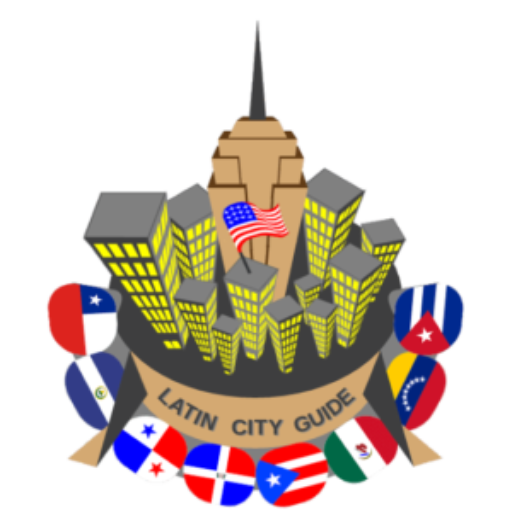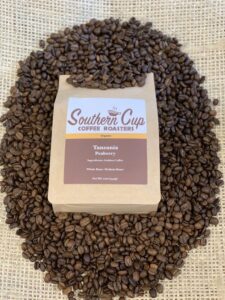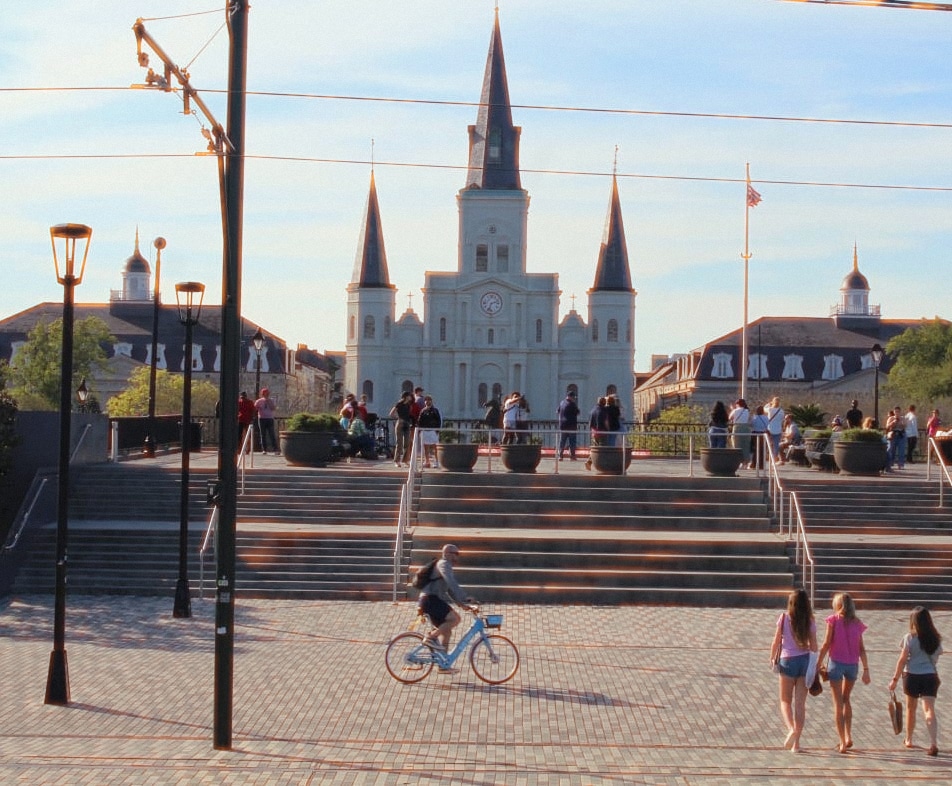
21 Mar An extraordinary journey through Latin America.
An extraordinary journey through Latin America.
As in the rest of the beautiful places on planet earth, Latin America has its own cultural identity, its own way of identifying and highlighting itself in front of the rest of the world; probably the first thing that comes to mind when you hear about this place is: extravagance, parties, culture and joy, something that to some extent contrasts with the general view that is taken over, for example, Europe; we invite you to learn more about this wonderful planet, which this time dazzles us with a land called Latin America.
Let us start this continental journey through the southernmost piece of land possible in America, we are talking about Chile:
Chile.
Chilean culture is an interesting mix of ethnicities and indigenous elements, with a certain touch of Spanish colonialism (evidenced in the language and religion of the nation). If we go a little further into the matter, we find its capital Santiago de Chile, its economic center. Chilean customs that extend throughout the country can begin to be seen with their passion for football and, to a lesser extent, the rodeo.
As is usually familiar, these cultural customs are influenced by the geography of their territory that having so many beaches and coasts become famous activities such as surfing and skiing, which are strong tourist activities. As a common rule in its gastronomy, seafood and similar foods are famous, although this also varies by region of Chile.
Visit biobiochile.com
If we mess with his art, nationally and even worldwide are quite recognized painters such as Roberto Matta and Carlos Sotomayor, continuing with this side of the humanities, we can appreciate his magnificent literature that has several Nobel prizes such as the acclaimed Pablo Neruda and Gabriel Mistral which have propelled the new Chilean generations like Isabel Allende. To finish our tour of Chile some important customs of its culture:
-National Dance: La Cueca (1824)
-Day of the Virgin of Guadalupe.
-Day of the dead. Image taken from: elordenmundial.com
-Day of the Candelaria.
-Dance of the flyers.
If we take a small leap, just to a neighboring country, we meet Argentina.
Argentina.
Why do not we start with their gastronomy, Argentines are real artists with grill, pasta and gnoquis; and even pizzas, with which they compete even at the level of New York and Naples. And how to forget the Argentinian matte, its famous infusion that unites friends, family, and colleagues.
Nor can we forget their people, and it is that Argentines have a reputation for conceited around the world, they are also stubborn, impetuous, and passionate. When you arrive as a foreigner you instantly feel the human warmth that is felt in every corner of the nation, from Patagonia to the capital Buenos Aires. And of course, in the same way you feel the love for football, the matches are lived between vigors and screams, and as you do not, on two occasions they have won the World Cup.
In Argentina there are numerous cultural activities such as: theatre, painting, sculpture and its famous tangos. For this reason, this is one of the best tourist spots in Latin America! We invite you to visit him!
Uruguay.
Even though it is a small country, it has an immense number of ethnicities, this is because it was forged based on immigrants from all over the world. Therefore, it becomes interesting to talk about their culture.
Within this beautiful country there are many things that can be highlighted, such as: its unique styles of art deco, the Uruguayan tango or the sites listed as a World Heritage Site. Tango can be said to be one of the largest cultural contributions in the entire silver region and was even declared an intangible cultural heritage of humanity in 2009 by UNESCO.
Visit : uruguayeduca.anep.edu.uy
And let us not leave aside the Uruguayan carnival, which, without a doubt, in one of the traits of the local culture that deserves the attention of foreigners. This is the longest of the mute and represents a colorful range of parades. Although it may be surprising, there are even more factors that stand out worldwide or continentally, another is theatre, which is one of the most important at the Latin American level and across the nation has more than 70 operating rooms.
Finally, we highlight some dishes of Uruguayan food that you should try:
-Roast.
-Capeletis to the Caruso.
-Rice with milk.
-Faritana.
-Creole empanadas
Paraguay.
Paraguay, the country of yandutí and coconut flower, orange blossom and yerba mate is the basis of its history in the fusion of two cultures and traditions: European, and South Guarani. A clear example of this in his bilingualism, which endures to this day, making use of Spanish and Guarani.
It is impossible for us to omit their cultural activities, which, like the countries presented to you above, is a very strong point within their cultural identity; among the most noteworthy we can find: His literature, his theater and the music. If we do not continue to dive, we get to that point that no foreigner can jump when traveling, and that is, gastronomy, which is based on agro products and meats (we highlight Paraguayan soup). With this we find quite common foods for Paraguayan families.
-Corn.
-The cassava.
-Peanuts.
Visit : elgourmet.com
Before we leave this country let us talk about its music, in which it becomes common to listen to genres such as polka and guaranaia. The former is lively and party-like, while the guaranaia are slower and more romantic. To finish some names of important people in the world of Paraguayan music, Agustín Barrios – José Asunción.
Brazil.
You must be thinking about that, and it is true, Brazil is world famous for its football, which is the nation’s favorite sport to this, it should be added that its men’s national team is one of the most successful in the world. If we talk about its language, we will find that it is Portuguese, which is spoken by 100% of the inhabitants.
Visit : mundodeportivo.com
As for its gastronomy, we can see that the national dish is the Feijoada, which is a stew of black beans with pork, beef, and other vegetables. An interesting fact is that it has a national cocktail, which is, the caipirinha. If we talk about their cultural activities, we can highlight to the first extent, their music in which genres predominate such as: Samba, brega and frevo.
The other points that we cannot omit and are part of the identity of the country would be: The Carnival of Rio de Janeiro and the Christ the Redeemer. Starting with the carnival, it is a festival that happens every year in the city of rio de janeiro, where in an atmosphere full of joy, new artists present their songs, a great parade is made for the city, it is sung and taken during the days you take the carnival. Finally, we have the Christ the Redeemer, which is a 30.1-meter-high statue of Jesus Christ with his arms outstretched; it represents forgiveness, redemption, and protection.
Bolivia.
In Bolivia there are 36 different Indigenous peoples originating or peasant, which are recognized by the political constitution; this means that, within its borders, clothing, customs, traditions, rites, and dances is too folkloric and full of life. These traditions were mixed with Spanish traditions during the conquest generating a mixture between the two cultures, but even with this, festivities of the ancient Indigenous people are still celebrated in which they stand out:
-Carnival of Oruro.
-Entry of great power.
-Entrance of the virgin of Ukropina.
Image taken from: bbc.com
Bolivian cuisine is as varied as its topography, and although there are traditional delicacies to discover in each locality, we will name you the places you should visit to live the best experience.
Gustu: Innovative restaurant of gastronomic hatching in peace (capital of Bolivia).
Tarija wineries: It is a thriving wine industry.
Central Market: In sucre, this wonderful site full of vendors preparing fruit and selling their meat products, agricultural etc.…
Finally, let us get to know your people a little, it is said that in the lowlands people are more hospitable, informal, and generous with outsiders; and that the inhabitants of the highlands are more focused on jobs, but at the same time less open. Bolivia can show a very stratified society, and the difference between the two parts of the country is alarming.
Peru.
This beautiful mix of cultures that is created around Peru makes the festivities look mystical, which usually manifest the fusion of Catholicism with the pre-Hispanic traditions of each region. In Peru eating is taste to the good palate, it is the way that multiple cultures demonstrate their union by living in the same territory; Peruvians are experts in new flavors, however, if you want to appreciate with total attention the gastronomy of this country, it will be wonderful to visit mistura, which is the most important gastronomic fair of the nation, which brings together important chefs and restaurants of the country, this develops once a year in lima, the capital.
If we now move to their cultural activities, we can find their craftsmanship, their music and dances. As for its artisanship, it has been recorded since ancient times in fabrics, pumpkins, wood, stone, gold, silver etc… Craftsmanship is a key factor that is passed down from generation to generation.
Image taken from: miviaje.com
Now, a list of places to visit if you travel to Peru:
-Machu Picchu, Cusco.
-Colca Valley, Arequipa.
-Choquequirao, cusco.
-Nazca Lines, Ica.
-National paracas reserve.
Ecuador, Venezuela, and Colombia.
These three neighboring countries have the same series of colors on their flags, a few centuries ago they belonged together with other countries of South America, to a single nation called, The Great Colombia. Why? we do not see anything about their culture, and we can appreciate that they share many customs in common.
These three nations, as well as other countries in South America, have a great diversity of ethnicities, on this occasion most are half-breeds; one fact that is incredible is that the variety of climates and biodiversity is immense in these three territories, for example, Colombia is the second most diverse country in the world. With this, we have no doubt that we are facing a beautiful place in this strong world, now let us look at some of the cultural activities we can find.
Visit : r10colombia.com
Starting with Ecuador, we find parties such as Inti Raymi, and the black mama, which are religious celebrations; on inti Raymi’s side, we could define it as an Inca feast that is celebrated around the sun god and as for the black mom it is a special day near the virgin of mercy. On Venezuela, let us highlight its gastronomy, the first thing that should attract our attention would be two dishes in particular: the arepa and the pavilion; arepa is a product made from corn, this product is extremely versatile and is eaten throughout the country (it is also famous in Antioquia, Colombia).
Let’s finish this season with Colombia, and in this section, we will reveal the places that if or if you should visit.
-Bogotá, the capital of Colombia is a city full of art and adorned by its green landscapes.
-Desert of the Tatacoa, is one of the best scenarios to enjoy a beautiful night and a shower of stars.
-Medellin, is the second largest city in Colombia and one of the most innovative in the world.
Panama.
It is recognized for its strategic position, which, being so allows it to create what is now known as the panama channel that generates incredible profitability to the country; Panama is the bridge between the Atlantic and Pacific oceans.
Image taken from: iflr.com
In the country there are seven Indigenous cultures that practice ancestral customs, as well as museums, archaeological sites, and remains of buildings of the sixteenth century; Carnival culture is one of the main festivals that give a unique contribution to the whole nation, there is greater excitement in cities such as: Penonomé, tables, Chitre, Ocú and more. Art, culture, and popular customs have a meeting place in the famous provincial fairs and festivals throughout the country, taking as reference that of the Azuero region which is where there are more typical manifestations.
5 dishes to try!
-Ceviche.
-Pot tamal.
-Old clothes.
-Lobster of the Caribbean.
-Sancocho.
Costa Rica.
Costa Rica was the point where the original native cultures of Mesoamerica and South America were found, and to some extent, the culture of the country of the country is influenced by Spanish. In a strict way of speaking, Costa Rican cuisine does not have a unique style by itself, it is a combination of flavors from Spain, North America, the Caribbean and South America; in this way, we find the typical dish that is, the pinto rooster. The name of this dish is unrelated to its ingredients, this majar consists of a mixture of black beans with white rice in addition to its seasonings and is typically served with eggs or custard.
Image taken from: recetascostarica.com
As for the tourism of the region, its ecotourism stands out, which consists of exploring beautiful natural areas full of life; these activities are so popular that they lead a lot of tourists to visit the natural parks every year, some of those parks are:
-The lagoon of the lodge lizard.
-Maquenque ecolodge.
-The ecolodge standard.
Nicaragua.
Nicaraguan folklore is an intangible cultural heritage, the traditional dances of the Pacific such as: the gigantona, the dwarf head and the huaco bull are very lively and full of rhythm. As for artistry, this has been a dynamic activity of the economy; throughout the year there are different artisanal and cultural displays that aim to make known to the public the creative innovations of the artisans, the samples range from pottery, ceramics, wood carving and musical instruments.
Image taken from: canal6.com.ni
Historically Nicaragua has been rich, since pre-Hispanic times there are songs and stories of the first settlers. Also, representatives such as the guegueense which is a sample of theatre, dance, and music; in 2005 it was named as an oral and intangible heritage of humanity.
Throughout the territory of Nicaragua, we find outstanding festivities, especially religious, for example, during the 7th and 8th of December the pure in honor of the immaculate conception of Mary is celebrated. Also notable are the patron saint festivities in honor of Saint Sunday, these are celebrated between 1 and 10 August from the nineteenth century; and in the same way, Christmas is celebrated, which is a particularly important celebration at the national level full of traditions and family union.
Honduras. Take a Survey!
The culture of Honduras is the set of expressions of a people, such artistic-Cultural expressions are held during certain days of the year through special celebrations, and various patron saint fairs are held throughout the year among which stand out:
-The Isidra de la ceiba fair, an event that lasts a week and culminates with the great Ceibeño carnival.
-Hondurans also celebrate the Juniana fairs of San Pedro Sula which is distinguished by their musical concerts.
Image taken from: hondurastips.hn
Honduras in a multicultural and multilingual country, although most of its population is mixed-race or the product of the mix between Honduran, African and European ethnic groups; Honduras maintains its own indigenous identity with peoples such as: Garifuna, mosquito, pesh etc.… Finally, we will say that Honduran gastronomy is heavily dominated by seafood and corn. Typical Honduran food is based on poultry, meats, fish, tortillas, beans, rice and even delicious homemade cheeses.
In this country you can enjoy beach days in the islands department or get to know beautiful green places and lungs where you will reconnect with nature, so we will show you a recommendation of places to visit.
-Roatan.
-Tegucigalpa.
-Dirty keys.
-The ceiba.
-Yohola lake.
El salvador.
To finish this journey, we meet the savior, of whom we will talk about topics such as his clothes, his dance, his gastronomy, and his religion. First, their clothing, in the savior there are diverse types of typical costumes, which vary according to the festivities, but they usually wear accessories such as a scapular, a shawl and a cloth.
Image taken from: cuadernodebitacoraufvdla.wordpress.com
Some of the typical meals of the country are beans with rice and aromatic herbs, fried cassava, tamales and of course papusas, which were created by the native pipiles of the savior. They are prepared in the form of a thick tortilla, made with cornmeal dough filled with one or more ingredients, among which we can mention: Cheese, beans, pork chicharrones etc…
The savior’s music shows cultural and religious influences, Roman Catholicism has made a significant impact on the savior’s culture, which is also reflected in modern music including cumbia, hip hop, salsa and reggaeton. On sports issues, the nation’s main sport, as in the vast majority of Latin American countries, is football; although it is true that other sports such as basketball and volleyball are also popular.
The feast of flowers and palms, an important celebration for the Salvadoran people, is celebrated every first Sunday of May in panchimalco; the flowers are cultivated all year round, the variety is extensive, and you can observe roses, keyials, summers among others, with this celebration offerings to the virgin mary and welcomes the rainy season.
Guatemala.
It is a country where many cultures flow, a sign of this is its extraordinary cultural richness that is reflected in the 25 languages (22 Maya, the Garifuna language, the Xinca language and Spanish). The majesty of its landscapes and the unparalleled beauty of its emblematic archaeological and colonial sites have the recognition and admiration of the international community, recognition that has been manifested by registering three sites to that of UNESCO international heritage, two of them cultural: ancient Guatemala and the archaeological park and Quirigua ruins.
Image taken from:Guatemala.com
Guatemalan cuisine varies by region, but many Guatemalan dishes are based on Mayan cuisine, which can be seen in the abundant presence of ingredients such as corn, chilli and beans. Popular recipes include enchiladas, quesadillas and tamales.
Another important element of Guatemalan music is its music, the inhabitants of Guatemala are famous after their percussion ensembles that make up the marimba, the national instrument.
For those who want to know the most intimate parts of the metropolis, one of the typical sites is the central market of Guatemala City, which offers a huge selection of products that have given the country world fame: they are national products, unique pieces and exclusive handicrafts, all at very low prices. While walking through the historic center, there is also the metropolitan cathedral; the Aycinema landscape and the metropolitan cultural center are places and buildings that should be visited. Walking through its historic center also allows you to admire buildings and houses that have a rich virreinal past.
Mexico.
Mexico is a place where mariachis, color, chili, and tequila reign; in short, the traditions of Mexico know how to make every moment something special and carry joy by flag. The variety of influences throughout the history of Mexico, from the ancient Mayan civilization to the dominant European civilization, has shaped and defined the captivating country that is now Mexico.
Image taken from: exportou.com
Music is a fundamental element of Mexican culture. From current rock to mariachi and Indigenous sones, there is a wide variety of musical styles throughout the country. As for its art, it has an enormous wealth of pre-Hispanic, colonial and modern art that can be seen both in museums, in public areas and in the abundant remains of Indigenous architecture.
A very noteworthy is its cinema, which has a well-seated foundation since the nineteenth century. It is an internationally acclaimed and respected cinema, with a prolific production by famous directors; Loa film festivals in Mexico also have enormous cultural importance, being considered the Guadalajara international film festival the most prestigious in all Latin America.
Thank you for taking the time to read this post. Please take a few moments to complete a survey and let us know how we are doing.
Survey Link:https://latincityguide.com/take-a-survey/






No Comments